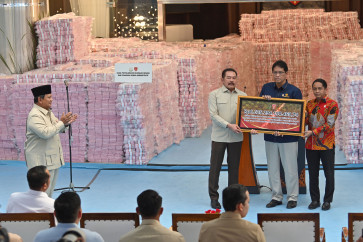Popular Reads
Top Results
Can't find what you're looking for?
View all search resultsPopular Reads
Top Results
Can't find what you're looking for?
View all search resultsUnderstanding Nadiem’s big splash in education sector
There is a disparity within the Indonesian education system, and the national assessment, for the first time ever, allows us to accurately quantify it.
Change text size
Gift Premium Articles
to Anyone
F
rom abandoning the national exams (UN) to introducing his own Merdeka Belajar (independent learning) curriculum last year, entrepreneur-turned-minister Nadiem Makarim and his colleagues at the Education, Culture, Research and Technology Ministry have rolled out numerous policies that have taken many by surprise after years of rigid teaching methods. The Jakarta Post’s Dio Suhenda sat down with Anindito Aditomo, the ministry’s Educational Standards, Curriculum and Assessment Agency (BSKAP) head who was at the forefront of many of these new policies, to understand what motivated the changes ushered in by Nadiem.
Question: What was the common denominator that connected all of Nadiem’s new policies? Were they made specifically to mitigate pandemic-related learning loss?
Answer: Our focus, even before the COVID-19 pandemic, was to improve the learning quality for students, since we are facing a learning crisis, in which students are not learning even when they are in school. It’s true that [the pandemic-induced] problem of learning loss has made the situation worse, but this learning crisis has been around for decades.
That’s why all our main programs are focused on addressing this issue. And to understand this better, we have come up with the National Assessment, or AN, which is our way to ensure that everybody in the education sector prioritizes character building and basic competencies, such as literacy and numeracy [in schools].
Since its implementation, there have been two rounds of the National Assessment, in 2021 and 2022. What did it reveal about the state of our education system and how are education authorities planning to use the results to improve it?
The results of the two ANs confirmed what we have suspected all along, that students are in school but they are not really learning. Some students are still struggling to even understand the meaning [of an excerpt] that they are reading. But, what’s different from the AN [compared to its predecessor, the UN] is that we can accurately measure the quality of education in each school. There were around 300,000 schools that participated in last year’s AN, and we have conveyed the results back to each school in the form of a “report card” for them to reflect on and use to help figure out their priorities for improvement.
Granted, we are not yet happy [with the results of last year’s AN]. But there is some good news, since we have seen improvements in literacy and numeracy. We will reveal the exact results at a later date.



















